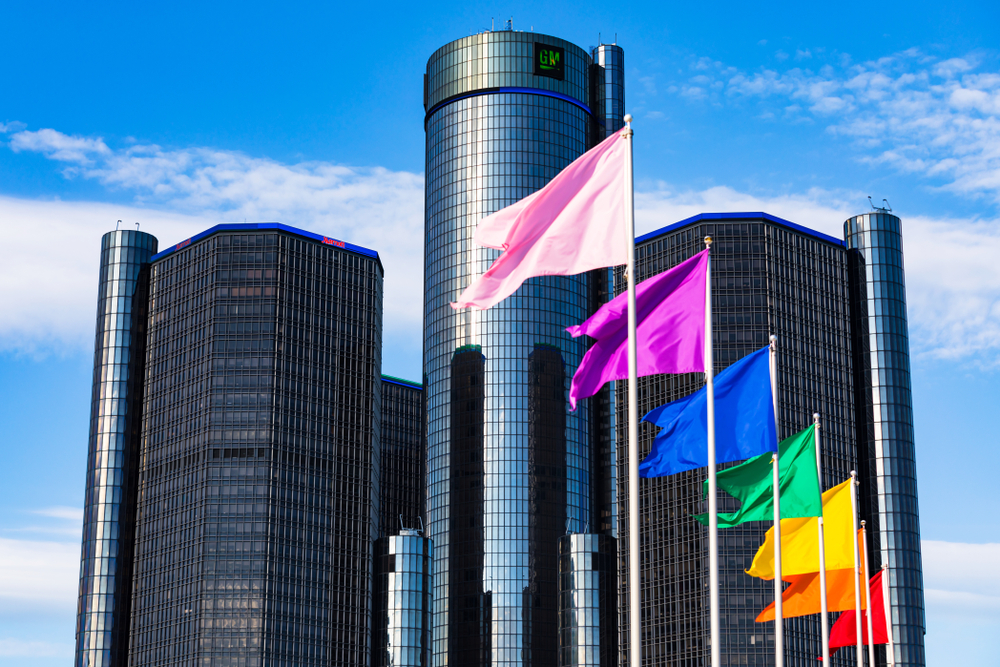During the month of June, much of the world turns to rainbow. Billboards and websites sport colorful logos and commercials with families across genders, ethnicities and backgrounds.
June is LGBTQIA+ Pride month, chosen to commemorate the Stonewall Riots—a series of demonstrations by members of the gay and transgender community in response to police brutality—in 1969. One year later, demonstrators organized a march down Christopher Street in New York to celebrate “Gay Pride,” a protest that has evolved into the Pride marches and celebrations that can be found across the world.
Corporate sponsorship of Pride Month, often seen in the form of rainbow logos or Pride-themed merchandise, is an aspect of the monthly celebration that has caught the attention of many in recent years—for better or worse.
To discuss the benefits, opportunities and challenges of corporate-sponsored Pride, we spoke to Jeffrey Boles, associate professor and chair of the Legal Studies Department at the Fox School of Business. His research and teaching expertise are in criminal law, corporate governance, ethics and compliance, and he teaches an undergraduate course focusing on sexual orientation, gender identity and the law. He has openly identified as a member of the LGBTQIA+ community in the workplace for nearly two decades.
When did corporate-sponsored Pride Months begin? What are some early examples?
Corporations began sponsoring Pride in the 90s—NYC Pride, for instance. I remember going to Pride events in the 90s with corporate sponsors, and companies celebrating Pride during the month of June really took off in the last decade.
The number of corporations participating in Pride has reached all-time high levels. It’s not surprising, given the national buying power of the LGBTQIA+ community is about a trillion dollars—that’s just within the United States.
What are some of the more transparent ‘virtue signaling’ types of campaigns from organizations?
The message that many companies give implicitly to the LGBTQIA+ community is, ‘We will support you celebrating your identities and, in return, please buy our products.’ I think how that message gets conveyed is crucial, because it’s not always well thought out or well-received. People can quickly see the difference between companies that are acting sincerely and ethically and companies that are just trying to cash in. Nobody wants to feel exploited or recognized just because it’s politically correct to do so in June.
From my perspective, it’s particularly troublesome if the companies are not contributing directly to LGBTQIA+ causes, but are paying for exposure. Or if they are selling branded rainbow-colored products for consumers from the LGBTQIA+ community while donating thousands or millions of dollars through PACs (political action committees) to politicians who actively work against LGBTQIA+ rights.
The question really is: Is the corporate support a marketing stunt or real activism? Showing up only during Pride Month with a superficial show of support is a clear way to signal the former.
Why do you think ‘the business of Pride’ has become a divisive topic in recent years?
On the pro side, and from the perspective of working at a business school, we are in a unique position to highlight this: corporate allies have played an important role in recent LGBTQIA+ history. From a financial perspective, corporate donations provide an essential source of funding for many Pride events around the country and around the globe. Whether it’s out of goodwill or self-interest, corporations have often supported LGBTQIA+ communities before governments or politicians did.
But for many people in the community, Pride celebrations and marches bring awareness to the ongoing work for acceptance and equality, and they believe that corporate involvement distracts from the purpose of Pride events.
Corporate involvement does raise a number of questions: What exactly are these corporations supporting? What happens to the money spent on Pride-themed products? Does corporate support for LGBTQIA+ issues have any real, tangible impact? What’s the percentage given to charity vs. what’s kept by the company?
These are all relevant questions that I think any company can legitimately be asked if that company supports Pride.
How can companies authentically celebrate Pride month?
Companies can increase awareness about specific issues affecting the LGBTQIA+ community that may not otherwise be receiving media exposure. They can also create campaigns to promote social and institutional change.
And it’s important to note that the LGBTQIA+ community is not a monolith—there are a number of issues that affect different marginalized groups. Issues such as LGBTQIA+ youth homelessness, hate crimes that disproportionately affect transgender women, problems in the criminal justice system, are some examples.
In advertising, acknowledging the diversity within the LGBT community beyond young white men is also critical. I also think companies can support a growing number of alternative events, such as Black Pride and Transgender Pride that are held by people who continue to fight for the same rights that privileged members of the LGBTQIA+ community may take for granted.
How can businesses use this momentum to make positive diversity, equity and inclusion changes across organizations?
There are limitless opportunities for businesses to make change using Pride as a jumping off point. For example, here are five ways an organization can support, protect and uplift LGBTQIA+ professionals:
- Create an LGBTQIA+ affinity employee-resource group and support the group’s programming events, as well as actively recruit LGBTQIA+ employees with equal human rights protections that include sexual orientation and gender identity in nondiscrimination policies.
- Offer at least one transgender-inclusive health care plan option with current market standard coverage. To help support this offering, maintain gender transition guidelines showing best practices in transgender inclusion for supervisors and teams.
- Review the organizations’ philanthropic efforts to ensure that company donations are not supporting discriminatory policies towards LGBTQIA+ people.
- Institute diversity training programs for new hires, for supervisors and for professional development, and obtain senior officer and director buy-in for such training.
- Develop performance evaluation assessments for senior officers and directors.
To learn about proud moments of LGBTQIA+ history at Philadelphia and Temple University, click here.
